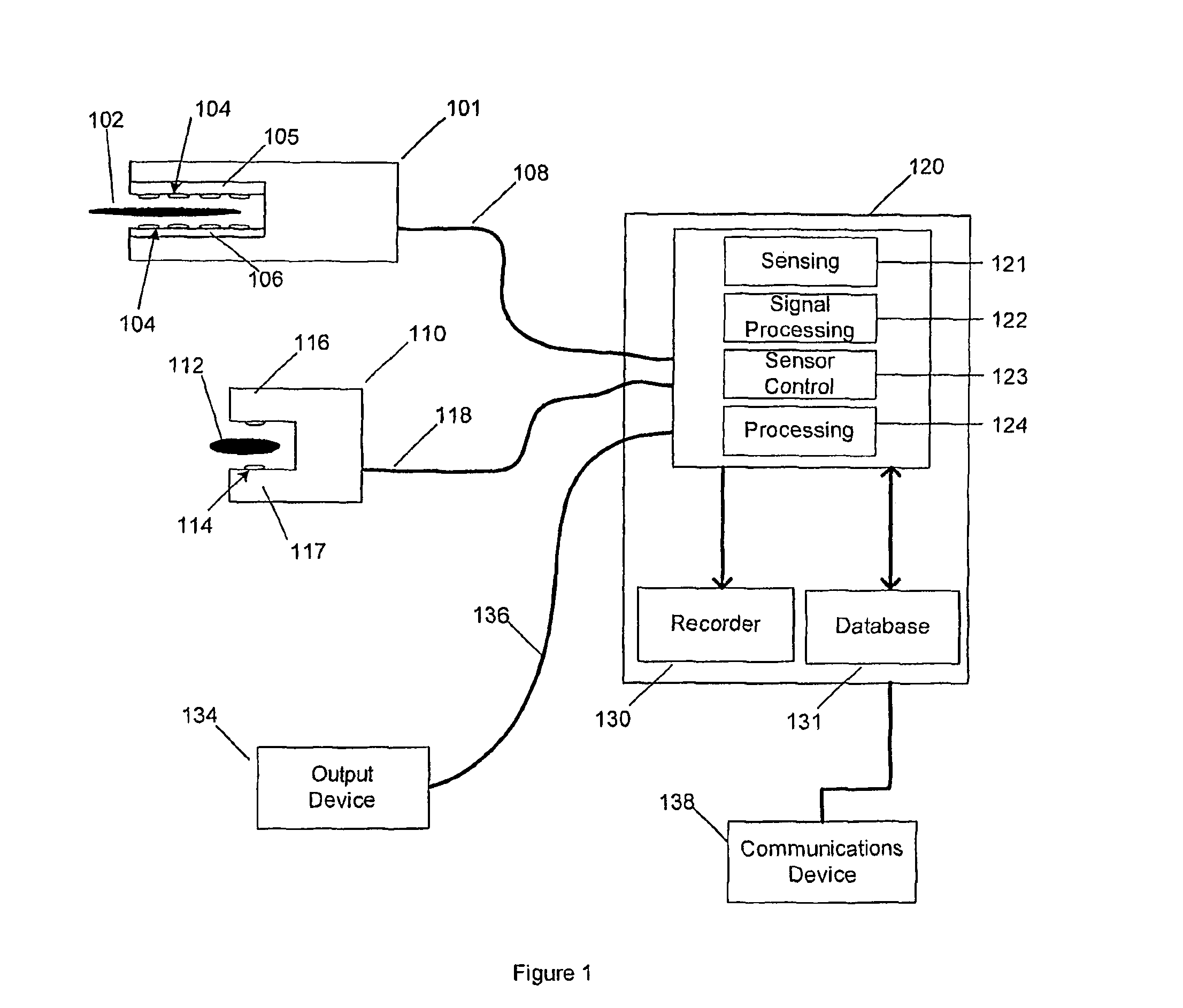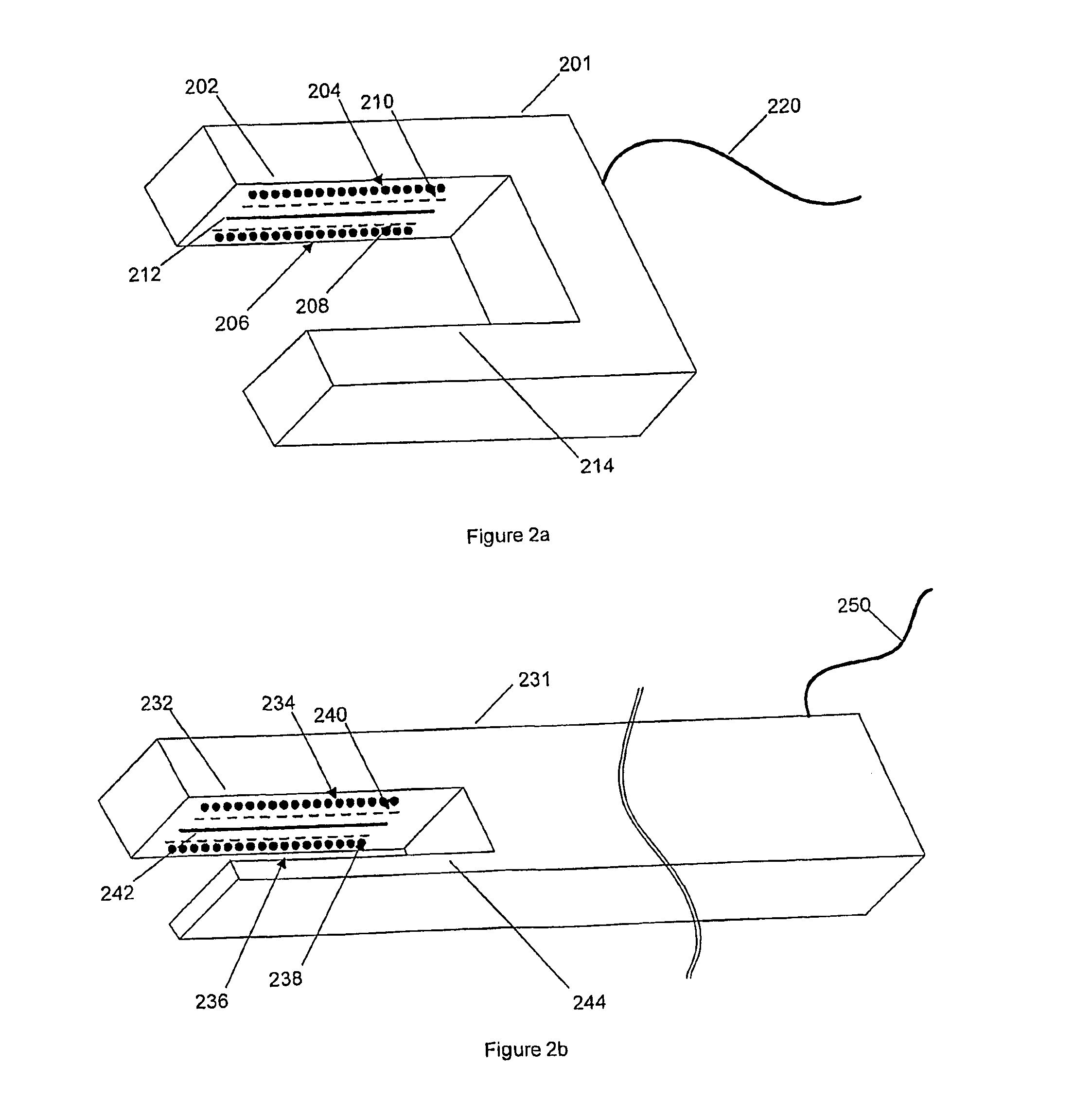Surgical instruments with sensors for detecting tissue properties, and system using such instruments
a technology of tissue properties and surgical instruments, applied in the field of surgical instruments, can solve the problems of failure, pain, need for reoperation, extreme sickness or death, and no reliable method of predicting when a failure will occur, so as to avoid or detect the failure of the procedure
- Summary
- Abstract
- Description
- Claims
- Application Information
AI Technical Summary
Benefits of technology
Problems solved by technology
Method used
Image
Examples
Embodiment Construction
[0050]Conventional surgical instruments having sensors for measuring tissue properties have no means of adapting to patient-specific characteristics that are of utmost importance in avoiding surgical procedure failure. The present invention addresses and solves these problems stemming from conventional sensing surgical instruments.
[0051]According to the present invention, a system provides expert procedural guidance based upon patient specific data gained from surgical instruments incorporating sensors on the instrument's working surface, one or more reference sensors placed about the patient, sensors implanted before, during or after the procedure, the patient's personal medical history, and patient status monitoring equipment. In certain embodiments, the system records data across the entire patient encounter including pre-operative, intra-operative and post-operative periods, as well as immediate, acute, short term, and long term outcomes both locally in hospital-based units as w...
PUM
 Login to View More
Login to View More Abstract
Description
Claims
Application Information
 Login to View More
Login to View More - R&D
- Intellectual Property
- Life Sciences
- Materials
- Tech Scout
- Unparalleled Data Quality
- Higher Quality Content
- 60% Fewer Hallucinations
Browse by: Latest US Patents, China's latest patents, Technical Efficacy Thesaurus, Application Domain, Technology Topic, Popular Technical Reports.
© 2025 PatSnap. All rights reserved.Legal|Privacy policy|Modern Slavery Act Transparency Statement|Sitemap|About US| Contact US: help@patsnap.com



